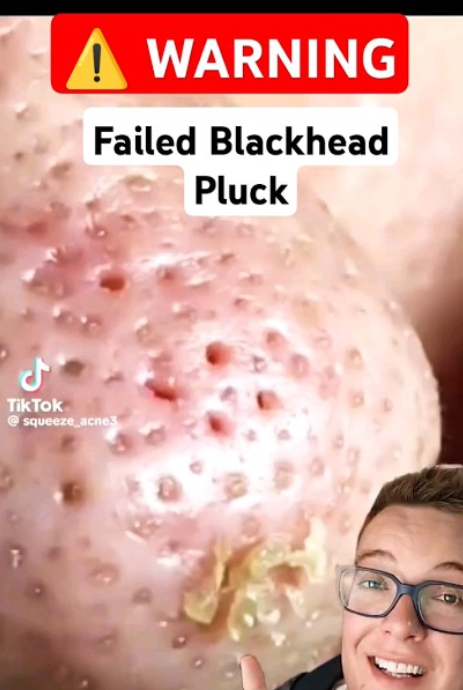Blackhead removal is a common practice for many people seeking clearer skin, but when performed incorrectly, it can lead to a number of unintended and often unpleasant consequences. The act of “explosive blackhead plucking” refers to the aggressive or improper extraction of blackheads, which can sometimes result in the sudden release of sebum, bacteria, or even cause the blackhead to explode. This phenomenon is not only disturbing to watch but also can lead to various skin complications. Here’s a closer look at why this happens and how to avoid such mishaps.
What Are Blackheads?
Blackheads, also known as open comedones, are clogged hair follicles that appear as small, dark spots on the skin. They typically form on the face, especially around the nose, chin, and forehead, but can also develop on the back, chest, or shoulders. The dark color of a blackhead isn’t due to dirt but rather the oxidation of the clogged material (sebum, dead skin cells, and debris) when it comes in contact with air. While blackheads are not painful or harmful, many people find them unsightly and seek to remove them for cosmetic reasons.
The Risks of Improper Blackhead Removal
While it may seem tempting to pluck, squeeze, or use tools to remove blackheads at home, doing so improperly can result in various skin issues. One of the most common and dramatic outcomes is the “explosive” release of sebum when a blackhead is forcefully extracted. Here’s why this happens:
- Pressure Build-Up: Blackheads are essentially a blockage in the pore, and when excessive pressure is applied during extraction, the contents of the pore may be forced out suddenly and violently. This can lead to an explosive release of oil, dirt, and bacteria, often causing further irritation to the skin. The intense pressure may also damage the surrounding skin, leading to redness, inflammation, and even scarring.
- Bacterial Infection: When you attempt to remove blackheads improperly, particularly with unclean hands or tools, you risk introducing bacteria into the pores. This can cause further breakouts, or even lead to an infection that might need medical treatment. If the blackhead is not fully extracted or if the pore is damaged, it can become a breeding ground for bacteria.
- Scarring and Hyperpigmentation: Constantly plucking or squeezing blackheads can lead to scarring, which may become permanent. Additionally, post-inflammatory hyperpigmentation (dark spots) can develop as a result of the trauma caused by aggressive extraction. These marks can linger long after the blackhead itself has been removed.
- Compromising Skin’s Natural Barrier: Frequent and forceful extractions can strip the skin of its natural oils and disrupt the delicate balance of the skin barrier. This can lead to dryness, irritation, and increased sensitivity. Over time, this can make your skin more prone to developing new blackheads and other types of acne.
How to Safely Remove Blackheads
While blackhead removal is possible, it’s crucial to do it correctly to avoid complications. Here are a few safe practices:
- Use Gentle Methods: Instead of aggressive plucking or squeezing, consider using pore strips or gentle exfoliating masks that can help loosen the debris clogging the pores. Salicylic acid-based products are particularly effective at breaking down the buildup inside pores without the need for physical extraction.
- Consult a Professional: If blackheads are persistent or severe, it’s best to seek help from a dermatologist or esthetician. Professionals have the tools and techniques to safely extract blackheads without causing harm to the skin.
- Proper Skin Care: Prevent blackheads from forming in the first place by following a good skincare routine. Regularly cleanse your skin, exfoliate to remove dead skin cells, and use non-comedogenic products that won’t clog your pores.
Conclusion
While the allure of perfectly clear skin is understandable, it’s essential to approach blackhead removal with care. The concept of “explosive blackhead plucking” highlights the dangers of aggressive extraction methods and the potential damage they can cause to your skin. By opting for safer, more effective methods, and possibly consulting a skincare professional, you can reduce the risk of these mishaps while achieving smoother, healthier skin.
